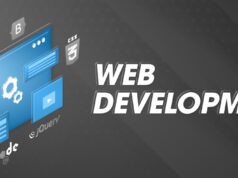
Did the people in your company come up with an entirely new program? Or did you add a new feature to the existing software that has been used in the whole organization? If so, you might have discovered that the development project is overwhelming, difficult, and totally different than what you initially expected it to be.
This is one of the main reasons why you should strongly consider implementing a software development plan that can guide people, as well as ensure that the project is successful and delivered on time. Now, you might be looking for some tips that can help, and if so, the guide below might provide you with the information you need. Let’s take a closer look:
1. Conduct a Viability Examination
One of the first things that you’ll need to do is to talk with the stakeholders to determine whether there is a specific need for something, determine what this need is exactly, and know it the proposed scheme can be viable in order to deliver the program development that is expected. In most situations, there will be an ROI study that will allow you to learn the costs and benefits of the thing you are working on.
2. Examine And Choose The Requirements

Your next action will be choosing the requirements, which is why a throughout exam needs to revolve around interacting with the end-users and other people who will be connected with the new system. Additionally, a complete review and a comprehension of the user documents and business regulations are key things in learning what the needed features are.
This is one of the most important things in the development process and it is when you’ll need to deliver documents that will outline the entire project, as well as ones that feature details on the software requirements. In order to do this, you’ll need to have a tech infrastructure that includes:
- PCs with advanced, integrated environment suite,
- A server for tracking and managing all the documents,
- A server for examining, production, and deployment,
- A tool for following requirements, tasks, as well as defects,
- An automated building system,
- A tool for testing regression, and
- A system that will report any issues.
3. Consider What The Best Industry Strategies Are

When you are defining the entire project, you’ll need to consider what are some of the best strategies in the industry. Here, you’ll need to follow strict templates and all actions should be tracked through the tool mentioned above. This will help you keep track of everything that is going on.
4. The Design is Important
When you reach the design stage, the person designing the software such as a programmer should put together a document that outlines how the program will meet the requirements you chose. You can utilize mock-ups that you’ll combine with the design outline, especially since it will showcase the interface features.
There might be a situation where you’ll need to customize it in order to deliver the needs and requirements. Now, this is something a lot of people choose to outsource, especially since those outsourcing companies offer work that is higher in quality. If you want to see what professional services you can opt for, check out the custom software development company VironiIT for more info.
5. Measure And Track The Progression

As mentioned, you’ll not be able to collect data if you do not have an infrastructure in place. Various tools and indicators can aid you with learning whether or not there is an issue, hence, it will allow you to recognize and take care of it efficiently and on time. When examined over a longer period of time, these things can help you determine if the software is ready or not.
6. The Development
This is the point where the outline on the document becomes the real thing. Once you have executed all the aforementioned things, the program will meet the needs of the company that started the project in the first place. There are several phases that you’ll go through, including:
- Alpha – which is the first version where you examine the functionality,
- Beta – which is utilized for internal exams and usability,
- Release Versions – a stable program that might need a few changes, and
- The Gold Master – the version which is completely ready to be released.
The managers will need feedback on several things including the experience of the use, the time it needs to complete tasks, whether or not it is easy to use, as well as any other info regarding the interface, features, and functionality.
7. Consider Automating The Processes

If you want to be more efficient and fast, and if you want to avoid some of the mistakes that you can make, you should consider automating tasks that are repetitive. This includes things such as building code, scanning and analyzing the static code, testing the regression, as well as collecting data on the project, phase, end product, and other related things. This will lower the possibility of man-made errors when the program is introduced to the system.
8. Test Everything Several Times
As the team continues going through the process and finally on to testing the product, general progress is required. This means that the features need to be laid out in the form of a list, there should be scripts written for everything the user might choose to perform, and those features need to be tested to make sure that they will function correctly.
Once you have tested it, you should get rid of any bugs, lags, and other problems that you might have detected. Keep in mind that you should fix it fast since there might be strict schedules that you need to follow. Also, you might want to consider enhancing the features wherever it is possible.
9. Slow Integration

Slow and gradual integration is the most important thing you can do to succeed. This approach will introduce the software to a group of people and this form of testing is necessary for gaining approval for the entire organization. If the change is large and unsettling, there might be some level of resistance. Hence, to make things easier for yourself and the people you are working with, choose to implement it, one group, at a time.
Conclusion
As you can see, there is a wide range of things that you’ll need to consider and implement in your software development project. So, now that you know what you can and should choose to do – do not waste any more time. Instead, go back to the first point in this article and determine whether or not your project can be carried out.
John Carter from TCGen notes that. “The most striking product innovations are the result of both strategic planning and the careful nurturing of innovative product ideas. And yet companies not only fail to have systematic tools or processes for dealing with both aspects of their future product portfolio – many insist that it is impossible to have any such system.”












